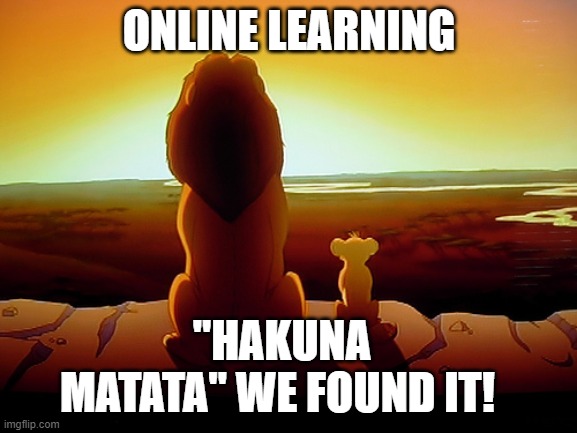After 12 weeks, it’s time to summarize and reflect on what I learned in the course Open Networked Learning (ONL202). The purpose of the course was for me to develop the view of online learning from a student perspective, and at the same time develop my way of teaching online. From colleagues who had previously participated in the course, I understood that I would also have to discuss with colleagues from other countries, which became another purpose for me. Namely to speak English which is something I rarely do.
The course was structured as follows:
Week 1: Getting started
Week 2. Connecting
Topic 1: Online participation and digital literacies (2 weeks)
Topic 2: Open learning – sharing and openness (2 weeks)
Reflective week
Topic 3: Learning in communities – networked collaborative learning (2 weeks)
Topic 4: Design for online and blended learning (2 weeks)
Topic 5: Lesson learns – future practice (1 week)
During the first week, I became acquainted with the course’s website, and a couple of digital tools that we would use in the course. On the website I made a small presentation of myself and also attached a picture from my hometown. I had used the Google Drive tool before. What was completely new to me was to start a blog for individual reflections on the course’s various themes and tasks. Two weeks earlier, we had started a new Dental Hygienist program at the university. The university pedagogical unit was eager to let the students start blogs for their reflections in the education, instead of the Portfolio that we used earlier. It became a bigger challenge and much more time consuming than we had imagined. Technical support spent many working hours helping us teachers to achieve this in the learning platform Canvas. They also ended up making instructional videos to help students start a blog and connect it to the learning platform. What I learned from this is that young people are not as good at digital tools as you might think, and there must be a better strategy and preparation for the next program start. However, it was very interesting to read their reflections from the first course and after their visit to a dental clinic. As for myself, I think I will continue to blog from time to time for my own pleasure.
What I benefited most from ONL202 was the collaboration with my classmates in PBL13; Joshua, Nadia, Natalia, Shirin, Soniya, Stavros and our facilitators Jukka and Paula. Although we came from different countries and different subject backgrounds, we developed a good community and friendship in the group. Many thanks for putting up with my crunchy English and everything I tried and wanted to say but could not express well in words. You were wonderful, and I hope we can keep in touch!
It was very tentative and careful the first time we met, and I do not think anyone really knew what to do. But we read through the first assignment and started discussing. The task was based on pedagogy’s problem-based learning (PBL) and the now famous FISh method. We used different digital tools for each task such as Coogle, Miro, Google Jambord, Canva and Memes. When I look at the work of other PBL groups, there are many more digital tools to discover and learn. It has also been very interesting to read other people’s blogs and not least from PBL13. The blogs show how different we perceive and think differently about the same topics, it contributes to in-depth learning. So thumbs up for collaborations in small groups when the group collaborates towards the same goal. I have also tried myself on Twitter, but have not yet discovered the pleasure of this. This may be because I consider myself more of a visitor than an online resident. I will follow on Twitter for a while and we will see how it develops.
What I will take with me in my own teaching is the importance of setting up the teaching with literature studies, mixed with smaller PBL tasks, collaborations in small groups with reality-related tasks, webinars with discussions in breakout rooms, Qustions & Answers forum, recorded lectures and sometimes synchronous meetings for topic-related group discussions and problem solving. There is much more to explore here to change my traditional teaching role to the new role of facilitator for students’ Personal Learning Networks (PLN). I will also use more open material from Youtube etc. Forgive me all ONL: ers because I will not contribute back here in the near future, although you never know!
In my next course which starts next week, we have got a big challenge due to the Corona pandemic. Of 50 students, only 8 people in a group may meet at the same time at the university. So how can we place 4 weeks of clinical training online?
After much thought, we have now planned the students in several smaller groups of 4-6 students. Practical training where students practice methods in each other’s mouths will take place at the clinic. In the Clinical Training Center (KTC) we will have technical teaching with training on phantom dolls and at the same time stream the teaching to other students at home around Sweden. Personally, I will sit at home at the desk with a phantom doll and a document camera and show different exercises and mix this with small PBL tasks and group discussions. Here I am glad that I have completed the ONL course which has given me “rye in the back” and been an eye opener for online learning.
If you have other tips on how we can solve the teaching, you are welcome to share them here in my blog.
Over and out for this time!

